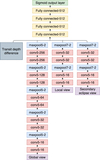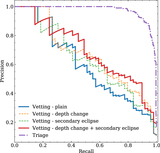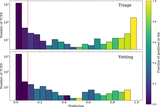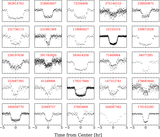Image Details
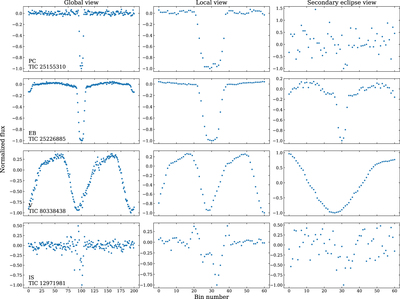
Caption: Figure 1.
For each TCE, we prepare three phase-folded, depth-normalized representations of the light curve: the “global view” (left column) is a fixed-length representation of the entire period; the “local view” (middle column) is a close-up view of the putative transit; the “secondary eclipse view” (right column), only present in vetting mode, is a close-up view of the most likely secondary eclipse. Each row presents an example from one of the four categories of TCEs: PC (planet candidates), EB (eclipsing binaries), V (stellar variability), and IS (instrumental artifact).
Copyright and Terms & Conditions
© 2019. The American Astronomical Society. All rights reserved.



